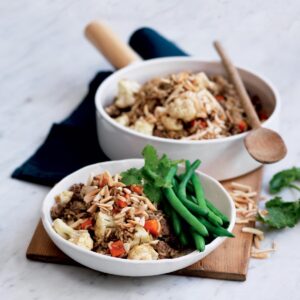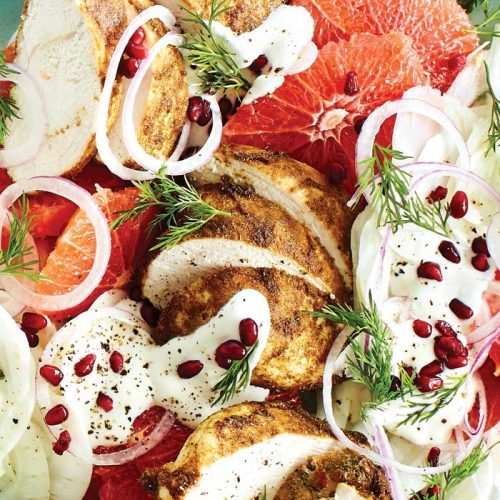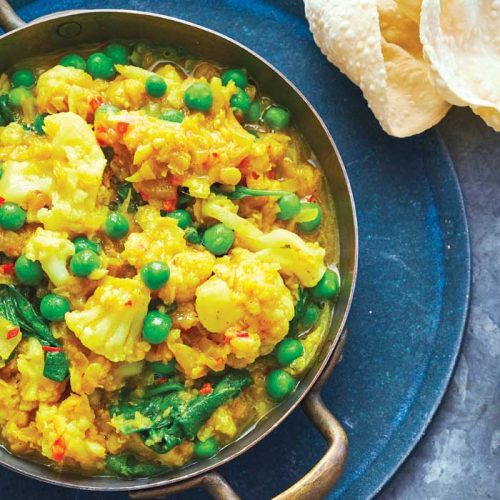
Tips on how to feel full and not gain weight this winter.
Tip 1: Forget skimpy meals
Start each day as we mean to go on; not constantly hungry. Eating a hearty breakfast with high-fibre bread or cereal, and some protein and fruit, will get the metabolism going, the brain functioning, and keep us satisfied for longer. For those who can’t eat first thing in the morning, schedule a good breakfast for as soon as you can.
Some people think skipping carbohydrates at mealtimes is a good way to cut kilojoules, but we need carbohydrates for energy at each meal. Trim the portion size instead; aim for 1/4 volume of your meal to be carbohydrate, 1/4 protein, and 1/2 lower-energy vegetables.
Tip 2: Super soup
Scientists who have been studying soup say it’s more satisfying than many other types of food. In one study, a puréed vegetable soup was found to be more satisfying than the same ingredients served as vegetables with a glass of water.
The puréed vegetable soup increased the time it took for the stomach to empty, as well as enhancing hormonal and metabolic responses which influence food intake and satiety. Several studies which have tested the effects of regularly eating soup over a period of months found it can reduce energy intake, increase satiety and promote weight-loss. A light soup helps reduce appetite at a meal, and a warm hearty soup can be a satisfying meal in itself.
- When entertaining at home, serve a low-energy soup at the beginning of a meal to help curb appetites. Serve a smaller amount of the higher-energy food with the main course and still satisfy everyone’s appetites. (This is also more economical than having your guests fill up on meat.)
- Serve hot and hearty winter soups with whole grain bread as one-pot meals for lunch or dinner.
Tip 3: Avoid over-stimulating your appetite
Too many different flavours at one meal stimulate the senses so much that we eat more food. Eat a variety of foods throughout the days or weeks, but keep each meal relatively simple.
- Casseroles and soups are hearty winter fare which can contain a large portion of your carbohydrate, protein and vegetables all in one.
Tip 4: Cleanse the palate
Cleansing our palates at the end of a meal can help signal that the time to eat is finished.
- A scoop of sorbet or frozen berries provides a sweet treat and cleanses the palate.
- Drink fruit tea or green tea after a meal. We don’t usually link biscuit eating with these hot drinks in the same way we might with black tea or coffee.
- Brush your teeth.
Tip 5: Nourish sweet desires
Why do we feel full only to find we have a second stomach for dessert? If we know we’re going to crave something sweet after a meal, we might as well plan for it. Why not make it a fruit-based sweet which will add to our 5+ a day at the same time? Fruit can satisfy a sweet tooth without adding refined sugars and often extra fat, which comes with the not-so-healthy alternatives. A small serve is often all that’s needed to satisfy our sweet desires – make it seem more substantial by serving on smaller plates.
- Sliced fruit on a plate can be more appetising as a dessert than a whole piece of fruit.
- If plain fruit doesn’t work for you, serve with a low-fat yoghurt and a few almonds.
- Bake fruit for a hot treat: chop apples, add a few sultanas, a little brown sugar and wrap in filo. Bake parcels for 15 minutes at 200°C. Serve with yoghurt.
- Slice apples, pears or peaches (or a fruit combination), arrange in a baking tray, sprinkle with oats and a little castor sugar. Grill for 5-6 minutes.
Tip 6: Get a good night’s sleep
A growing body of research is finding links between how long we sleep and the hormones leptin (suppresses appetite) and grehlin (stimulates appetite). One study, which included over 1000 people, found that habitually sleeping for fewer than seven and three-quarter hours was associated with a higher body mass index (BMI), as well as reduced leptin and elevated ghrelin levels. These hormonal changes would be likely to increase appetite and could explain the higher BMIs. Other studies on the effects of one to two days’ sleep deprivation have found similar changes in hormone levels, and participants reported increased hunger and appetite.
Comfort food favourites
Try these HFG recipes. They’re all super-satisfying and filling without overloading on kilojoules or fat.
Roasted vegetable soup
Pumpkin and spinach cannelloni
Cheese and tomato-topped lamb meatballs
Cinnamon chicken with couscous
Citrus hummus pasta with butter beand and spinach
Moussaka
HFG mince pie
Fish and chips
Tuna macaroni bake
www.healthyfood.com













